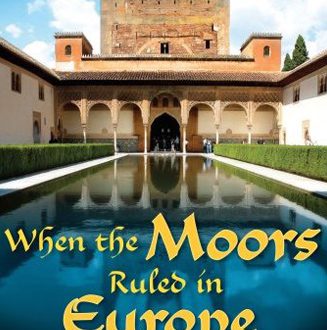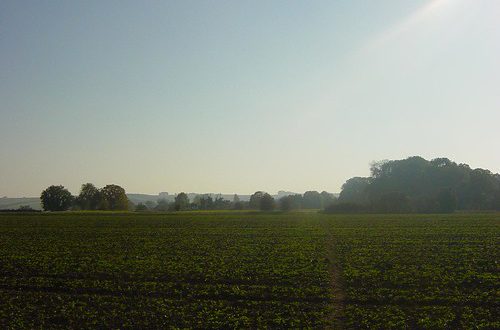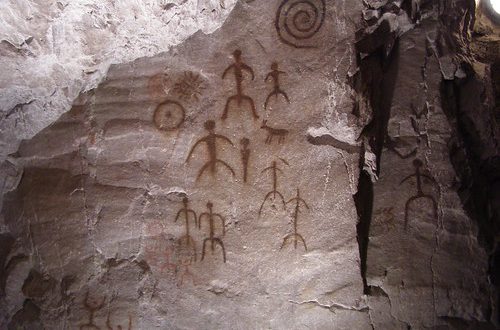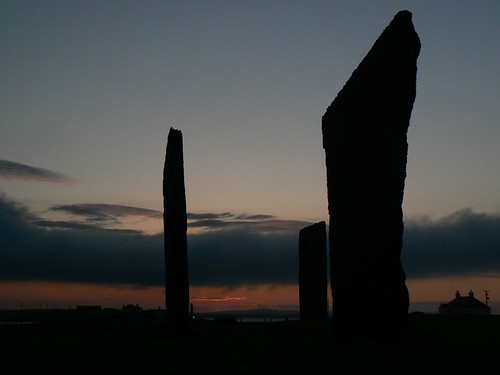 An ‘amazing’ Neolithic temple has been unearthed on the northern Scottish island of Orkney, which ‘dwarfs’ its more famous prehistoric neighbours. The 7000 – 1700 BC monument was discovered beneath the strip of land dividing Harray Loch and Stenness Loch, and is the latest addition to an area which already boasts an incredible archaeological heritage. The temple may be sandwiched between the Ring of Brodgar and the Standing Stones of Stenness – but at 65ft long and similarly wide, the newly uncovered temple far eclipses its illustrious company for size. Though the building has remained hidden to this day its form is clearly visible, with slightly worn walls measuring 3ft tall by 16ft thick. And experts believe one of its standing stones, split with an hourglass-shaped hole, is the first of its kind found anywhere in the world. Its exact usage is undetermined, though archaeologists are speculating that it had a religious significance, with its cross-shaped inner sanctum and stone art and furniture.
An ‘amazing’ Neolithic temple has been unearthed on the northern Scottish island of Orkney, which ‘dwarfs’ its more famous prehistoric neighbours. The 7000 – 1700 BC monument was discovered beneath the strip of land dividing Harray Loch and Stenness Loch, and is the latest addition to an area which already boasts an incredible archaeological heritage. The temple may be sandwiched between the Ring of Brodgar and the Standing Stones of Stenness – but at 65ft long and similarly wide, the newly uncovered temple far eclipses its illustrious company for size. Though the building has remained hidden to this day its form is clearly visible, with slightly worn walls measuring 3ft tall by 16ft thick. And experts believe one of its standing stones, split with an hourglass-shaped hole, is the first of its kind found anywhere in the world. Its exact usage is undetermined, though archaeologists are speculating that it had a religious significance, with its cross-shaped inner sanctum and stone art and furniture.
Nick Card, from the Orkney Research Centre for Archaeology who are leading the excavation, believes the monument’s sheer size made it the ritual centrepiece for a huge area: “In effect it is a Neolithic cathedral for the whole of Scotland,” he tells The Herald. “A building of this scale and complexity was here to amaze – to create a sense of awe in the people who saw this place. Today it is still so impressive and when you look down on it from above it is almost jaw dropping,” he adds. “It is a real privilege to work here and we feel that this was a very special place when built four-and-a-half to five thousand years ago.”
Archaeologist Antonia Thomas reveals the excitement experienced by the team, in video footage of the excavation on STV. She says, “It’s absolutely amazing. I mean this is for myself and the other archaeologists why we are in the profession… You really have to suspend your disbelief sometimes. Almost every 10 minutes someone pops up and they’ve found something amazing.”
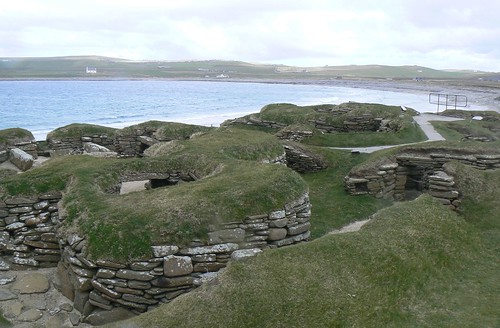 Other experts have been equally gushing of the discovery. “A structure of this nature would have been renowned right across the north of Scotland, and is unprecedented anywhere in Britain,” says Dr Colin Richards, reader in archaeology at Manchester University. Orkney is a Neolithic goldmine, with dozens of prehistoric treasures dotted along its rugged coastlines. As well as the previously mentioned sites, the island includes the majestic Maeshowe, Cuween Hill Cairn, Midhowe Cairn, Taversoe Tuick, the Knap of Howar, Rennibister Earth House and Quoyness Cairn. Its most famous attraction however, is the perfectly preserved Neolithic village of Skara Brae, which is currently undergoing work to save it from the encroaching Atlantic Ocean.
Other experts have been equally gushing of the discovery. “A structure of this nature would have been renowned right across the north of Scotland, and is unprecedented anywhere in Britain,” says Dr Colin Richards, reader in archaeology at Manchester University. Orkney is a Neolithic goldmine, with dozens of prehistoric treasures dotted along its rugged coastlines. As well as the previously mentioned sites, the island includes the majestic Maeshowe, Cuween Hill Cairn, Midhowe Cairn, Taversoe Tuick, the Knap of Howar, Rennibister Earth House and Quoyness Cairn. Its most famous attraction however, is the perfectly preserved Neolithic village of Skara Brae, which is currently undergoing work to save it from the encroaching Atlantic Ocean.

